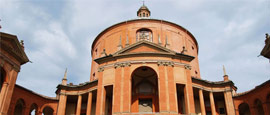Bologna History
The origins of Bologna can be traced back 3,000 years to the Bronze Age, but it was during the Iron Age that Villanovian villages emerged with a unique culture inhabited by skilled blacksmiths and potters.
They fostered trade links with Greeks and the Phoenicians, but by the 6th century the Etruscans dominated the area. Then the Gauls arrived in the 4th century BC, and were succeeded by the Romans in the 2nd century, by which time it was named Bononia.
For a time, Bologna was an important Roman city, but with the decline of the Empire it was intermittently sacked and occupied by Byzantines, Visigoths and Lombards. The latter, who ruled it from the 8th century onwards, used it largely as a strategic base for military operations.
By the 11th century, Bologna sought free commune status, and in 1088 established what many regard as the world’s first university. Soon came a remarkable era in which Bologna became one of the most prominent medieval cities on the planet. This is when many historic buildings were constructed, some of which are still standing. The tallest are Due Torri, or Two Towers, piercing the sky from the heart of the city.
Papal troops seized the city in 1506. Dozens of churches and convents were built, and the university was expanded with the creation of botanical gardens in 1568, one of the oldest in Europe. Papal control continued until Napoleon arrived in 1797, and Bologna joined the newly formed kingdom of Italy in 1860.
In 1941, Italy entered WWII as one of the Axis powers. This led to the deportation of Bolognese Jews and the Allied aerial bombardment of the city’s historic centre. After the difficult post-war years, the city became a leading industrial centre, cemented by its growing importance as one of the country’s main railway hubs. It eventually grew into one of the richest cities in Italy, with a strong tradition of leftist politics and an international reputation for culinary mastery.
Did you know?
• During the Middle Ages, some 180 towers were built by Bologna’s leading families. Apart from their ostentatious display of wealth and power, they allowed the elites to spy on each other. Fifteen towers still remain in the city.
• Despite Bologna’s leftist tradition, its grand football stadium was built under Mussolini as a symbol of fascist might, and directly contributed to Italy winning the right to host the 1934 World Cup.
• During the terrorist turmoil known as anni di piombo (Years of Lead), a bomb planted by fascists killed 85 at Bologna station, making it one of the worst tragedies of the post-war era.
Do you have any Feedback about this page?
© 2025 Columbus Travel Media Ltd. All rights reserved. No part of this site may be reproduced without our written permission, click here for information on Columbus Content Solutions.




 You know where
You know where